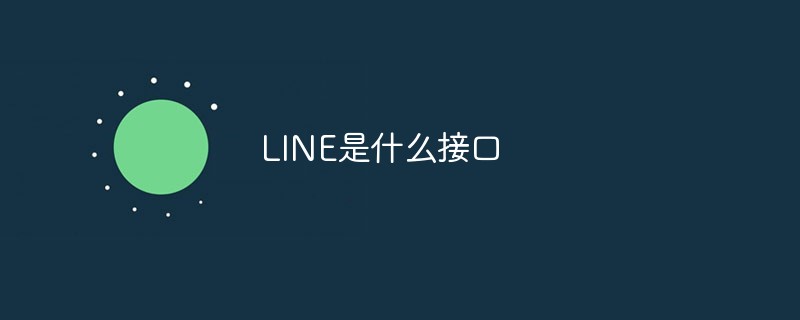Home >Common Problem >What interface is LINE?
LINE is a line interface, which can be divided into Line-in and Line-out. Line-in interface means line input, which collects audio signals through other audio equipment. This interface is mainly used to connect the recording of audio signal output from external equipment such as electric guitars, electronic keyboards, and synthesizers. Line-on interface means line output, which outputs the analog signal processed by the sound card to audio equipment such as speakers through the Line-out interface.

The operating environment of this tutorial: Windows 7 system, Dell G3 computer.
LINE interface introduction
LINE is the line interface.
The LINE interface is divided into two types: Line-in and Line-out. Line-in interface: This interface is mainly used for recording the audio signal output of external devices such as electric guitars, electronic keyboards, and synthesizers. Since these devices themselves have large output power, they need to be connected to the Line-in interface for recording. Use these devices. To some extent, recording can also be called "internal recording" of external equipment. Line-out interface: outputs the analog signal processed by the sound card to audio equipment such as speakers through the Line-out interface.

line in interface
The line in interface means line input, which collects audio signals through other audio equipment. Line in is relative to the "mic" input. Karaoke transmits sound signals from "dvd", "vcd" and "cd" to the audio equipment, which is the line input, and the person singing uses the "mic" input. The line-in interface is an audio line input. For example, you can record the sound signals from other players (non-digital signals such as repeaters) into the computer through the line-in.
line out interface
Line out interface means line output, which outputs the analog signal processed by the sound card to audio equipment such as speakers through the Line Out interface.
When Lineout first appeared, it was a transplanted output port of a desktop computer. It was purely for connecting external power amplifiers and other sound amplification devices. Therefore, the original data output by Lineout was not or rarely filtered by the chip, so the sound The fidelity is higher...
But most of the sounds output via Lineout cannot control the volume through the machine itself.
The impedance of the Lineout output is very high, about 300 ohms. If you use low-impedance headphones to connect it, you will feel that the sound is not full, substantial, and lacks elasticity. If you use high-impedance headphones, it will be worse. Full and transparent, although not loud. Generally, the output current is relatively small and will not cause overload.
For more related knowledge, please visit the FAQ column!
The above is the detailed content of What interface is LINE?. For more information, please follow other related articles on the PHP Chinese website!